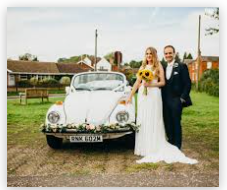Photoshoots are a fantastic way to express creativity, capture memories, or promote a product or service. Whether you’re an aspiring photographer or someone looking to have professional photos taken, careful planning is essential for a successful shoot. This guide will walk you through the key steps to ensure your photoshoot goes smoothly and delivers stunning results.
1. Define Your Vision and Goals:
- Purpose: What’s the reason for your photoshoot? Are you capturing family portraits, promoting a new product, or creating artistic images?
- Mood and Style: What kind of atmosphere do you want to create? Think about colors, lighting, and overall aesthetic.
- Audience: Who are these photos for? Understanding your target audience helps guide your creative choices.
- Key Message: In my photos, I aim to capture the essence of wanderlust and adventure, blending elements of nature with the human spirit. I want to convey a sense of freedom, curiosity, and connection to the world around us. My work often draws inspiration from renowned photographers like Peter Lik photography, whose stunning landscapes evoke a deep sense of awe and appreciation for nature.
To achieve this, I’ll seek out models who exude a sense of spontaneity and joy, and locations that evoke a sense of awe and wonder, whether it’s a rugged mountain peak or a serene forest glade. Props will be chosen to enhance the narrative, adding layers of visual interest and storytelling. By incorporating these elements thoughtfully, I hope to inspire viewers to embrace exploration and embrace the beauty of the world. And if you’re wondering how to take a full length selfie to capture your own adventures, read more.
2. Budget and Logistics:
- Financial Planning: Determine how much you’re willing to spend on your photoshoot. This will influence your choices for location, equipment, models, and professional help.
- Timeline: Set a realistic timeframe for planning and executing your shoot. Allow ample time for each step, from concept development to post-production.
- Location: Choose a location that aligns with your vision and is accessible within your budget. Consider lighting conditions, permits (if necessary), and any potential challenges.
- Equipment: Make a list of the necessary photography equipment, including cameras, lenses, lighting gear, and accessories. If you don’t own everything, consider renting or borrowing.
3. Assemble Your Team (If Applicable):
- Photographer: If you’re not taking the photos yourself, carefully research and choose a photographer whose style matches your vision.
- Models: If your shoot requires models, select individuals who fit your concept and are comfortable in front of the camera.
- Hair and Makeup Artists: Professional hair and makeup can elevate your photos. If your budget allows, consider hiring experts.
- Stylist: For fashion or product shoots, a stylist can help curate outfits and props that enhance your overall aesthetic.
4. Develop Your Shot List:
- Inspiration: Create a mood board or collect reference images that capture the look and feel you’re aiming for.
- Specific Shots: List out the specific shots you want to capture, including different angles, poses, and compositions.
- Flexibility: While having a plan is crucial, leave room for spontaneity and creative exploration during the shoot.
5. Pre-Production Checklist:
- Confirm Availability: Double-check the availability of everyone involved, including the location and any necessary permits.
- Gather Props and Wardrobe: If you’re using props or specific outfits, ensure they are ready and accessible on the day of the shoot.
- Equipment Check: Test all your photography equipment to make sure it’s functioning properly.
- Weather Contingency: If shooting outdoors, have a backup plan in case of inclement weather.
6. The Photoshoot Day:
- Arrive Early: Give yourself ample time to set up and get organized before the shoot begins.
- Communication: Keep everyone on your team informed and engaged. Clearly communicate your vision and expectations.
- Positive Atmosphere: Create a relaxed and enjoyable environment to help your models feel comfortable and confident.
- Review and Adjust: Take breaks to review the photos you’ve taken and make any necessary adjustments to lighting, posing, or composition.
7. Post-Production:
- Editing: Carefully select and edit your best photos. Enhance colors, contrast, and sharpness while staying true to your overall vision.
- Delivery: Share the final images with your team and clients (if applicable) in the agreed-upon format.
Additional Tips:
- Contracts: If you’re hiring professionals, have clear contracts outlining the scope of work, payment terms, and usage rights for the photos.
- Insurance: Consider liability insurance to protect yourself in case of accidents or damage during the shoot.
- Feedback: After the shoot, gather feedback from your team and clients to learn and improve for future projects.
With thorough planning and a clear vision, your photoshoot can be a rewarding and successful experience. Happy shooting!





